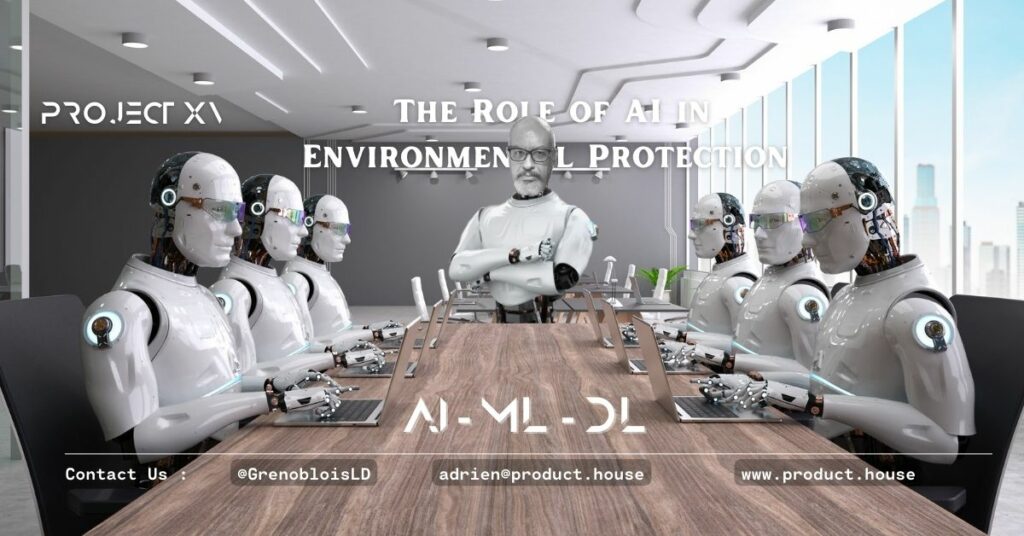

The Role of AI in Environmental Protection
The world is facing unprecedented environmental challenges, from climate change to deforestation, pollution, and biodiversity loss. As the consequences of human activities on the planet become increasingly dire, it is clear that traditional approaches to environmental protection are no longer sufficient. Fortunately, artificial intelligence (AI) is emerging as a powerful tool in the fight against environmental degradation.
AI has the potential to revolutionize the way we approach environmental protection by providing unprecedented insights, optimizing resource use, and improving decision-making. From monitoring and predicting natural disasters to reducing energy consumption and promoting sustainable practices, AI is already making a significant impact.
Monitoring and Predicting Natural Disasters
One of the most critical areas where AI is making a difference is in monitoring and predicting natural disasters. By analyzing vast amounts of satellite imagery, sensor data, and other sources, AI algorithms can detect early warning signs of natural disasters such as hurricanes, wildfires, and landslides. This enables authorities to issue timely warnings, evacuate people, and take preventative measures to minimize damage.
For example, AI-powered systems are being used to monitor deforestation and detect early signs of wildfires in regions such as the Amazon rainforest. Similarly, AI-driven models are being developed to predict the trajectory of hurricanes and other extreme weather events, allowing authorities to issue evacuations and take necessary precautions.
Optimizing Resource Use
AI is also playing a crucial role in optimizing resource use and reducing waste. By analyzing consumption patterns and identifying areas of inefficiency, AI algorithms can help industries and households reduce their energy consumption, water usage, and waste generation.
For instance, AI-powered smart buildings are being designed to optimize energy consumption by adjusting lighting, heating, and cooling systems based on occupancy and weather patterns. Similarly, AI-driven systems are being used to optimize water distribution networks, reducing leaks and waste.
Promoting Sustainable Practices
AI is also being used to promote sustainable practices and encourage behavioral change. By analyzing consumer behavior and identifying patterns, AI algorithms can provide personalized recommendations for reducing carbon footprint, conserving energy, and adopting eco-friendly habits.
For example, AI-powered apps are being developed to encourage people to reduce food waste by providing meal planning suggestions and recipe ideas based on ingredients nearing expiration. Similarly, AI-driven systems are being used to optimize transportation networks, encouraging people to use public transport, carpool, or adopt electric vehicles.
Insights and Decision-Making
AI is also providing unprecedented insights into environmental systems, enabling scientists, policymakers, and business leaders to make informed decisions. By analyzing vast amounts of data from sensors, satellites, and other sources, AI algorithms can identify patterns, trends, and correlations that would be impossible to detect through human analysis alone.
For instance, AI-powered systems are being used to analyze satellite imagery and detect changes in land use, deforestation, and biodiversity. This information can be used to develop targeted conservation efforts, identify areas of high conservation value, and monitor the effectiveness of environmental policies.
Challenges and Opportunities
While AI holds tremendous potential for environmental protection, there are also challenges and limitations to its adoption. One of the biggest challenges is the need for high-quality, reliable, and standardized data. AI algorithms require vast amounts of data to learn and improve, but environmental data is often fragmented, inconsistent, and incomplete.
Another challenge is the need for transparency and explainability in AI decision-making. As AI systems become increasingly autonomous, there is a risk that they may make decisions that are biased, discriminatory, or inconsistent with environmental values. It is essential to develop AI systems that are transparent, accountable, and aligned with environmental goals.
Despite these challenges, the opportunities for AI in environmental protection are vast. As the technology continues to evolve, we can expect to see even more innovative applications of AI in areas such as:
- Climate modeling: AI can be used to improve climate models, enabling scientists to better understand the impacts of climate change and develop more effective mitigation strategies.
- Biodiversity conservation: AI can be used to monitor and track biodiversity, identifying areas of high conservation value and developing targeted conservation efforts.
- Sustainable agriculture: AI can be used to optimize crop yields, reduce water consumption, and promote sustainable agricultural practices.
- Ocean conservation: AI can be used to monitor ocean health, track marine biodiversity, and develop targeted conservation efforts.
Conclusion
The role of AI in environmental protection is clear: it has the potential to revolutionize the way we approach environmental protection, providing unprecedented insights, optimizing resource use, and promoting sustainable practices. While there are challenges to its adoption, the benefits are undeniable.
As we move forward, it is essential that we prioritize the development of AI systems that are transparent, accountable, and aligned with environmental values. By harnessing the power of AI, we can create a more sustainable, resilient, and environmentally conscious future for all.




